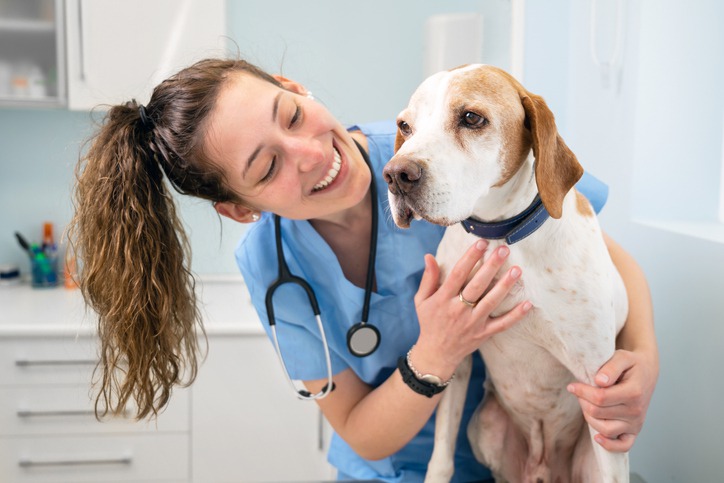As pet owners, we hope our pets will remain healthy and happy, but emergencies can happen when we least expect them. Being prepared and knowing what to do in an emergency can significantly affect how quickly your pet receives care. Whether it’s a sudden illness or an accident, having a plan for emergency pet care is essential for any responsible pet owner.
In this guide, we’ll discuss how to handle emergencies with your pet and the steps you can take to ensure they get the best possible care when it matters most.
How to Handle Emergency Pet Care
When an emergency arises, staying calm and knowing what to do next can help you react quickly and effectively. Here’s what to keep in mind when your pet needs urgent care.
1. Recognizing an Emergency
Not every issue your pet experiences is an emergency, but some situations require immediate attention. Here are a few common signs that your pet might be in an emergency:
-
Difficulty Breathing or Rapid Breathing
-
Uncontrollable Bleeding
-
Vomiting or Diarrhea Lasting More Than 24 Hours
-
Sudden Collapse or Inability to Stand
-
Ingesting Toxic Substances (Like Household Chemicals or Certain Human Foods)
-
Seizures or Unconsciousness
-
Trauma, Such as Being Hit by a Car
If you notice any of these symptoms, it’s best to contact a vet immediately. It’s better to be cautious and seek help rather than wait and risk your pet’s health.
2. Find an Emergency Vet Clinic
In an emergency, it’s essential to have a vet clinic in mind that can handle urgent cases. Many clinics offer 24 hour animal emergency services, which is crucial when something happens outside regular business hours. Ensure you have the contact information of a clinic that offers round-the-clock care and is prepared to handle emergencies.
You’ll want to keep the clinic’s phone number and address in an easily accessible place so you can reach them quickly. Additionally, some clinics provide telehealth services, allowing you to consult with a vet over the phone or via video, which can help determine whether your pet needs to be seen immediately.
3. Prepare a Pet First-Aid Kit
A pet-specific first-aid kit at home can help you provide initial care before you get to the clinic. Your kit should include:
-
Gauze and Bandages for Wound Care
-
Antiseptic Wipes or Solutions
-
Tweezers for Removing Small Objects (Like Splinters)
-
a Digital Thermometer
-
Saline Solution for Cleaning Wounds or Eyes
-
A Muzzle (Injured Pets May Bite Due to Fear or Pain)
While this kit isn’t a substitute for professional care, it can help manage minor injuries or keep your pet stable until you reach the vet.
What to Expect at the Emergency Vet Clinic
Knowing what to expect when you arrive at the emergency vet clinic can make the process smoother for both you and your pet.
1. Initial Examination and Diagnostics
Upon arriving, your pet will likely be examined immediately to assess the situation’s severity. The vet will check vital signs, ask you questions about what happened, and perform any necessary diagnostics.
Many clinics now offer on-site diagnostics through an in-house vet lab, which means they can run tests like bloodwork or X-rays without sending samples offsite. This speeds up the process and helps the vet determine the best course of action more quickly.
2. Treatment Plans and Costs
Once your pet’s condition has been evaluated, the vet will discuss treatment options with you. Depending on the severity of the issue, this could include anything from administering medication to surgery.
It’s a good idea to ask the vet about the estimated costs upfront. Emergency care can sometimes be expensive, so understanding the financial aspect beforehand can help you make informed decisions. Some clinics also offer payment plans or work with pet insurance to help manage the costs.
3. Follow-Up Care
After your pet receives emergency treatment, follow-up visits may be required to monitor their recovery. Ensure you understand what steps you must take, including administering medications, scheduling check-ups, and watching for any warning signs of complications.
Ask the vet for clear instructions before leaving the clinic. It’s also important to have a good relationship with a regular vet who can continue monitoring your pet’s health after the emergency is resolved.
Finding the Right Emergency Vet for Your Pet
Having a trusted vet clinic ready to handle emergencies gives peace of mind. When choosing an emergency vet, here are some things to look for.
1. Availability and Location
Choose a clinic that offers 24/7 emergency services and is located within a reasonable distance from your home. This ensures you can get your pet to the clinic quickly when time is critical. Clinics offering emergency services care are ideal since they’re always open when needed.
2. Qualified and Compassionate Staff
The quality of care your pet receives is directly linked to the experience and compassion of the clinic staff. Ensure the vets and technicians are well-trained in emergency procedures and know how to handle various situations. A clinic with an experienced veterinary surgeon in Boulder, CO, will ensure your pet is in capable hands, especially if surgery is required.
3. Modern Facilities and Equipment
Look for a clinic with modern facilities and equipment, such as diagnostic tools and surgical suites. Clinics with access to a vet lab can quickly run tests and get results on-site, which is crucial during emergencies when time is of the essence.
Wrapping It Up
When an emergency strikes, being prepared can make all the difference in your pet’s care. Knowing how to recognize emergencies, having a clinic in mind, and being aware of what to expect during treatment can ensure your pet gets the best possible care in a stressful situation. Remember these tips so you’ll be ready to act when it matters most.

